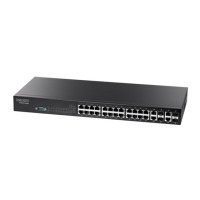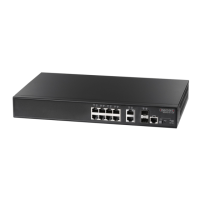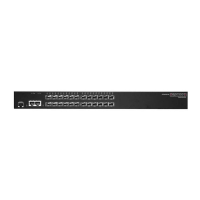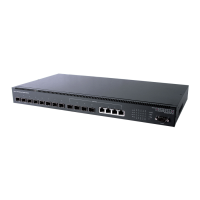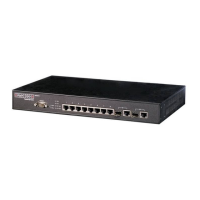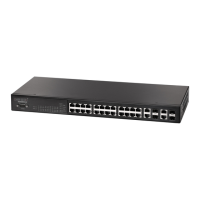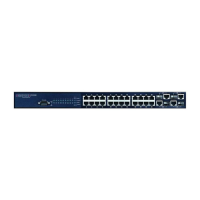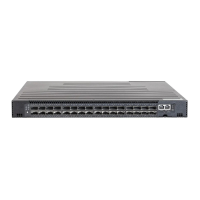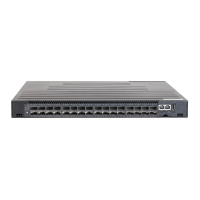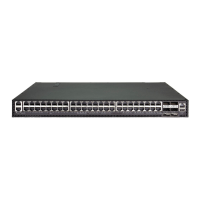C
HAPTER
33
| Spanning Tree Commands
– 1082 –
COMMAND USAGE
If at any time the switch detects STP BPDUs, including Configuration or
Topology Change Notification BPDUs, it will automatically set the selected
interface to forced STP-compatible mode. However, you can also use the
spanning-tree protocol-migration command at any time to manually
re-check the appropriate BPDU format to send on the selected interfaces
(i.e., RSTP or STP-compatible).
EXAMPLE
Console#spanning-tree protocol-migration eth 1/5
Console#
show spanning-tree This command shows the configuration for the common spanning tree
(CST), for all instances within the multiple spanning tree (MST), or for a
specific instance within the multiple spanning tree (MST).
SYNTAX
show spanning-tree [interface | mst instance-id | brief |
stp-enabled-only]
interface
ethernet unit/port
unit - Unit identifier. (Range: 1)
port - Port number. (Range: 1-28/52)
port-channel channel-id (Range: 1-16)
instance-id - Instance identifier of the multiple spanning tree.
(Range: 0-4094)
brief - Shows a summary of global and interface settings.
stp-enabled-only - Displays global settings, and settings for
interfaces for which STP is enabled.
DEFAULT SETTING
None
COMMAND MODE
Privileged Exec
COMMAND USAGE
◆ Use the show spanning-tree command with no parameters to display
the spanning tree configuration for the switch for the Common
Spanning Tree (CST) and for every interface in the tree.
◆ Use the show spanning-tree interface command to display the
spanning tree configuration for an interface within the Common
Spanning Tree (CST).
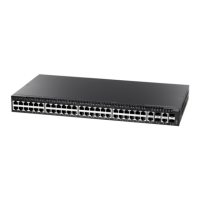
